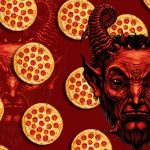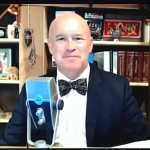“The theory of biocentrism describes reality as a process that fundamentally involves our consciousness. Robert Lanza’s scientific theory explains how, without consciousness: all matter dwells in an undetermined state of probability, time has no real existence and space is just a concept we use to make sense of things.
“If we look towards neuroscience and quantum mechanics to further fill in the blanks and shortcomings of biocentrism, all that we are left with are quantized states of consciousness. Reality, how we know it, does not exist. And if it had any sort of existence that we could visualize, it would look something like an endless sea of static, of information in which all probabilities exist. Imagining all these probabilities within a zero-dimensional space without time is not easy. But it is perhaps as close as we’ll ever come to imagining what reality really is.
“Any perception of time or continuity is actually an illusion. This is one of the reasons why Robert Lanza’s recent biocentric universe theory was considered to be “a wake-up call†by NASA’s astrophysicist David Thompson: when we look at the big bang or when we observe how quantum particles jump back and forth in time, we have the arrogance of assuming that time simply moves forward in a straight line and we then go on to see these time-anomalies as unusual and counter-intuitive. But there is no indication that our perception and memories define the arrow of time.
“All of this seems to suggest that our reality would completely disintegrate or, at the very least, become highly inconsistent and random at any moment. But the reason why we experience a rigid world with deeply structured laws of nature is because consistent patterns evolve according to mathematical principles. Since every possible pattern can exist within infinity, the only connection between two independent quantized moments of consciousness is the information that overlaps. Smaller or more compressed units are more common and the laws that we are subject to naturally emerge and bring about our consistent reality as it is the most probable one.
“Patterns can be found in any type of chaos and since very complex structures are required for consciousness to exist, the reality that we experience evolves along the probable branches of its own specific pattern. If neural disorders such as Capgras syndrome have taught us anything, it’s that we have an incredible ability to rationalize the oddities in our reality. There is one claim though, that becomes hard to refute: that the pattern of quantized moments of experience is inherently infinite and, statistically, an afterlife is inevitable.”











Add comment